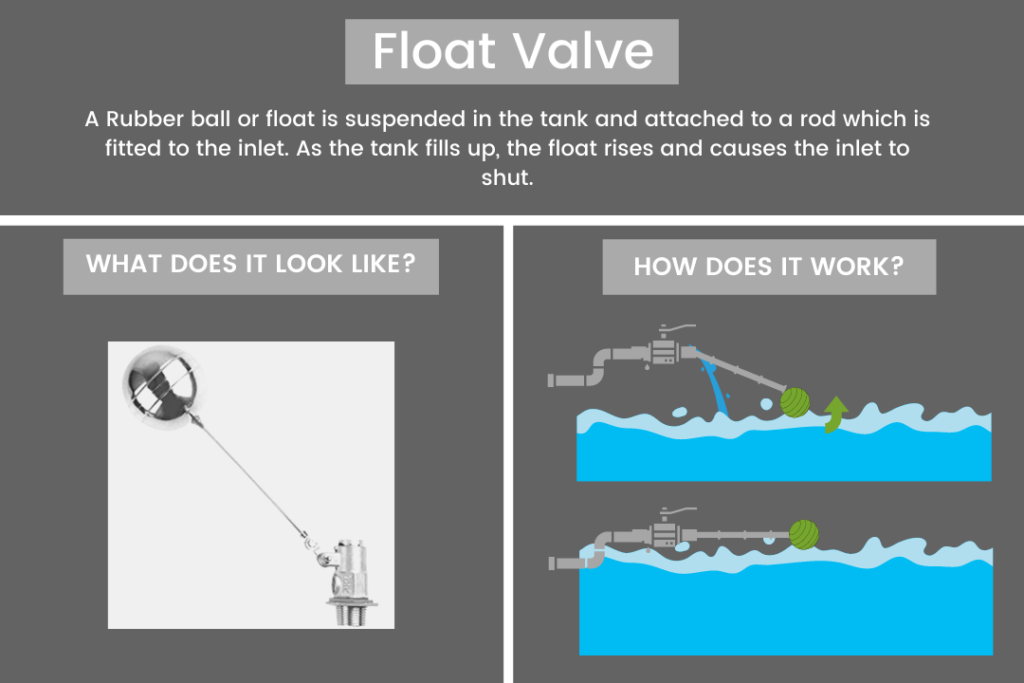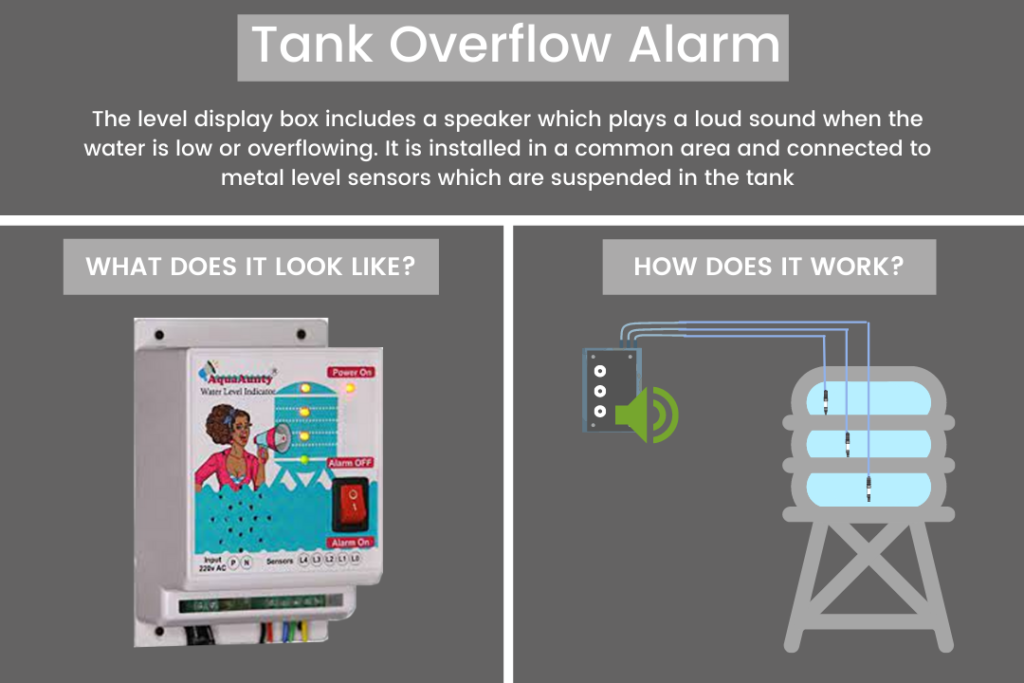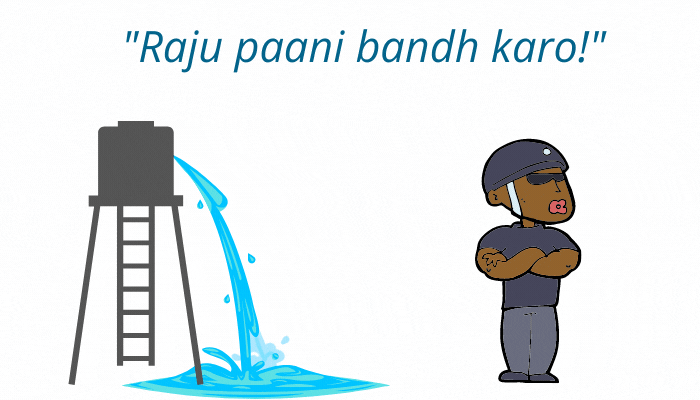Typical Scenario in a Housing Society: watchman runs to switch off the tank after someone starts screaming about the overflow.
In our previous blog, we have discussed the various issues that housing societies face in managing water. To prevent such reactive measures and inform users about the right equipment, we have rounded up the different instruments that can be of use by housing societies for water management today.
The pros and cons for each will help you find the right equipment for your needs.
A complete list of Equipment for Measuring and Managing Water and its Parameters
Typically, water measurement and management has been restricted to the Industrial sector, mainly because the equipment is expensive and not very user friendly.
Plus, the instruments are disparate and not really connected to each other, so there is no central dashboard from where you can manage your water.
Based on their needs, different industries manage water in different ways, tracking the parameters that are important to them.
Here we have classified the ways in which you can monitor water and the equipment that can be used for that.
Table of Contents
ToggleWater Level Monitoring
Water level monitoring is used to make sure that the water tanks are always full. This way, any process that depends on availability of water does not suffer as water levels are tracked. Water level monitoring also helps to prevent tank overflows and save water.
In case of groundwater or borewell, water level monitoring is done to prevent a condition called a pump dry run. A dry run occurs when a tank or bore well has no water and still the pump is switched on; in such a case, the pump motor runs without water and can overheat and get damaged.
Hence water level monitoring ensures there is water in the tank or the bore well before turning the pump on so that it can be protected from dry runs.
Equipment Used
1. Water level indicator
These are metal electrodes that you can suspend in your tanks at various levels. They are connected to a display box which is installed in an area where someone can constantly monitor it, for e.g. the lobby or the security cabin. The box displays the level of water in the tank with its LED indicators.
| Pluses | Minuses |
| -Cheap -Easily Available -Satisfies Basic Need | -Lengthy Wires – breakdown easily -No service/ support -Not accurate -No alarm/ alert system |

2. Float Valve
These are rudimentary rubber balls or floats that are attached to the inlet with a rod and suspended in the tank. As the water fills up, the float rises and causes the inlet to shut off. This helps to prevent overflows.

| Pluses | Minuses |
| -Cheap -Satisfies Basic Needs | -Cannot handle too much water pressure. -Breaks down after a while. -Not installable in all environments, rudimentary. |
3. Water Tank Overflow Alarms
These are very similar to the water tank level sensors/ indicators described above except that they come with a loud siren that gets activated when the tank is full or empty.
| Pluses | Minuses |
| -No need for constant monitoring -Alarms alert you to switch pump on/off | -Hard to install -Lengthy wires -Cannot switch pump on/off -Cannot see water levels from remote areas -Scaling may cause electrodes to malfunction |

Water Level Monitoring and Controlling
Sometimes, it is preferable to monitor water levels and also to automatically switch the motor ON/ OFF based on the water levels. This provides protection against pump dry runs as well. In such cases, devices called controllers are used. These are installed next to the pump and turn the pump on/off automatically based on the water levels.
Equipment Used
1. Water level controllers
This is a combination of the water level sensors described above and a controller. The device needs to be installed next to the water pump and interfaces with the pump. It is generally used with a submersible pump. It needs basic logic programming to infer the water level sensor input that is coming in and then to operate the pump accordingly (switch on or off).
| Pluses | Minuses |
| -Automatic operation -No need of manual supervision -Dry run protection | -Since it is installed near the pump, may not be visible for monitoring water levels -Long wires get messy and can break down during storms -Probes get deposits due to hard water and stop working -Professionals are needed for installations -After sales support staff are not reliable sometimes |

2. Float Switch
These are float valves which come with electrical connections to be connected to the pump. When the water reaches a certain level, the float becomes horizontal, electrical contact is made and the pump switches on or off as it is wired.
| Pluses | Minuses |
| -Satisfies basic need of stopping overflow -Cheap -Easily available | -Cannot withstand pressure -Needs to be installed near the pump -Long wires |

Flow Measurement
Flow measurement is used when you need to know the volume of water. Whether you want to measure water supply or water consumption, one of the ways to do this is to measure the flow rate of the water flowing in the pipe and then multiply it with the time duration it has been flowing.
In the residential sector, flow meters or water meters are used to measure the volume of water consumed by each individual unit (townhome, villa, apartment) so that they can be billed accordingly.
Equipment Used
1. Flow Meter (Paddle Type)
Also known as water meters, these have a paddle which rotates as water flows in the pipe. The number of rotations happening per minute help to measure the flow rate of the water flowing. Most flow meters now come with digital displays.
| Pluses | Minuses |
| -Affordable -Serves the purpose of calculating flow and volume | -Needs pipe cutting for installation -Stones, impurities, etc. can get stuck in the panel causing it to fail -Need to write down readings manually -Needs water to be pressured so that the paddle will rotate |

2. Flow Meter (Ultrasonic)
These are modern flow meters that make use of ultrasonic waves to measure the flow rate of water. They have digital displays. Some of them are also equipped with Iot technology and send readings via SMS or the cloud.
| Pluses | Minuses |
| -May not need pipe cutting -No risk of impurities getting stuck -Can send readings over the internet | -Very expensive -Installation can be tricky -Need to incur recurring data charges |

3. Solenoid Valves (used in conjunction with water meters)
Solenoid valves are installed in pipes to allow or stop the flow of fluid. They are operated electromagnetically. In the residential sector, they are used in schemes such as pre-paid water meters which allow or stop flow of fluid based on payment and usage.
| Pluses | Minuses |
| -Can be used to control flow of water -Can restrict supply to a particular water line if leakage is detected | -No need to install in each water supply line -May result in billing disagreements if working is inaccurate |

So what we see is that there is a variety of different instruments available in the market today to fulfil the different water management needs but there is no single platform where the data and alerts coming from each sensor, indicator or controller can be collected.
A Water management system should ideally cover the entire flow from water supply to individual water consumption to waste water treatment and recycling. Here in this blog we have discussed how IoT technology provides a perfect base for developing a smart and easy to use water management system.
In our next blog, you will understand how WaterApp enables the end user to consider individual water monitoring in depth. We will see how individual water monitoring can be done alongside its pros and cons.
SHIBANI THAKUR

